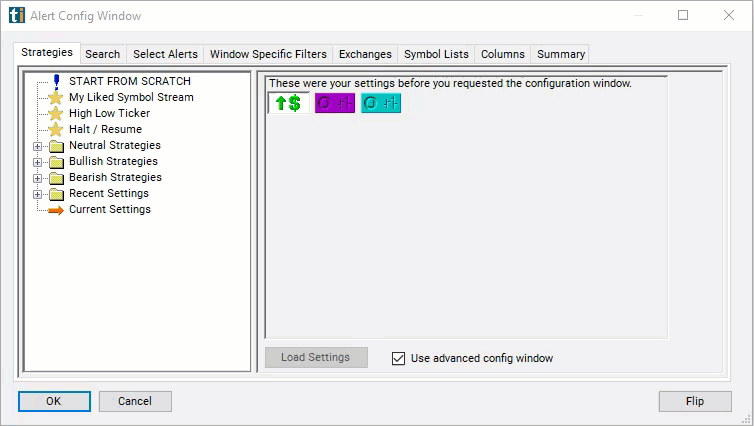Change From The Open
Table of Contents
- Understanding the Change from Open Bars Filter
- Change from Open Bars Filter Settings
- Using the Change from Open Bars Filter
- FAQs
Understanding the Change from Open Bars Filter
This filter provides traders with information about how much the stock price has moved since the open. This is the most powerful version of the filter, because it takes the volatility of each stock into account. Like the other versions, this starts by subtracting the stock’s opening price from its current price. Then it divides this value by the average size of a bar on a 15 minute bar chart for the stock. Positive numbers represent stocks which are trading higher now than at the open. Use negative numbers for stocks which are trading lower than at the open.
These filters are related to the % up / down for the day alerts. The filters and the alerts both compare the current price to the open. However, there are some differences:
- The alerts typically only display once for each level. The filters always have a value.
- The alerts only work with percentage values.
- The alerts only work during normal market hours.

Change from Open Bars Filter Settings
The settings of each Trade Ideas filter are defined in the Window Specific Filters Tab located in the Configuration Window of your Alert/Top List Window.
Here is how to setup the filter in your configuration window:
- Set the min to -1 and the max to 1 to see only stocks which are trading close to the where they were at the open.

Using the Change from Open Bars Filter
Several trading strategies can be employed with the Change from Open Bars filter. Here are a few examples:
Momentum Trading: Momentum traders aim to capitalize on the continuation of an existing trend in the stock's price. Traders may look for stocks with a significant positive change from the open, indicating upward momentum. They may then buy the stock, expecting the price to continue moving higher. Conversely, if a stock has a significant negative change from the open, indicating downward momentum, traders may consider short-selling the stock.
Breakout Trading: Breakout traders aim to capitalize on significant price movements that break through key support or resistance levels. Traders may monitor stocks with a large change from the open, particularly if the change results in the stock breaking through a significant support or resistance level. They may then enter trades in the direction of the breakout, anticipating further price movement in that direction.
Reversal Trading: Reversal traders aim to identify points where a stock's price is likely to reverse direction. Traders may look for stocks with an extreme change from the open, indicating potential overextension in price. If a stock has experienced a large positive change from the open, traders may anticipate a reversal and consider short-selling the stock. Conversely, if a stock has experienced a large negative change from the open, traders may anticipate a reversal and consider buying the stock.
FAQs
How is the "change from open (bars)" filter calculated?
- Like the other versions, this starts by subtracting the stock’s opening price from its current price. Then it divides this value by the average size of a bar on a 15 minute bar chart for the stock.
Can the "change from open (bars)" filter be used across different timeframes?
- Yes, the "change from open (bars)" filter can be applied across various timeframes, including intraday charts (e.g., 5-minute, 15-minute, 1-hour) and longer-term charts (e.g., daily, weekly, monthly). Traders can adjust the timeframe to suit their trading preferences and objectives.
Is the "change from open (bars)" filter used independently or in conjunction with other technical analysis tools?
- Traders may use the "change from open (bars)" filter independently to assess market conditions or in conjunction with other technical analysis tools, such as moving averages, trendlines, support and resistance levels, or oscillators, to confirm trading signals and enhance their analysis.
Filter Info for Change From The Open [FOR]
- description = Change from the Open
- keywords = Single Print
- units = Bars
- format = 1
- toplistable = 1
- parent_code = FOD




